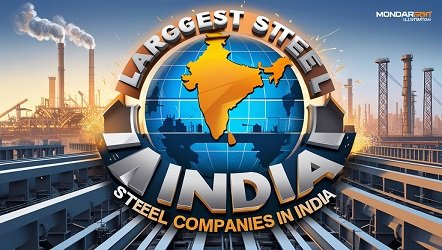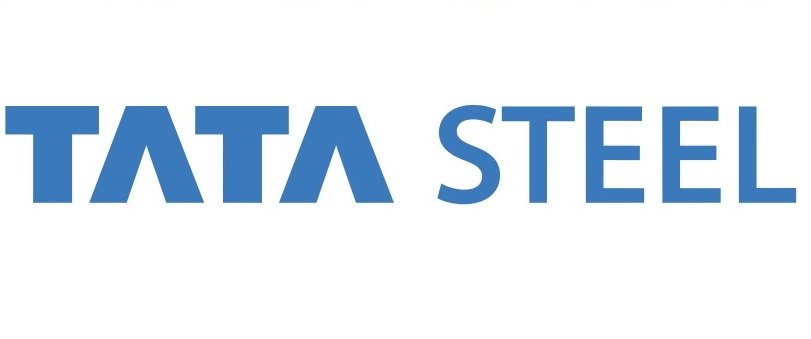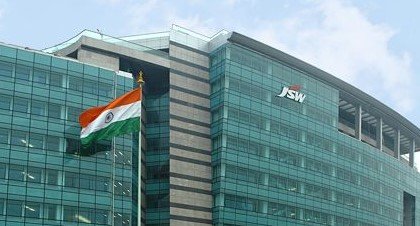India’s steel industry stands as a cornerstone of the nation’s industrial might, with giants that not only dominate domestically but also compete on the global stage. 🏭 From the historic Tata Steel to the dynamic JSW Steel, these powerhouses have shaped India’s journey from a developing economy to becoming the world’s second-largest steel producer.
As global infrastructure demands surge and sustainability becomes paramount, understanding India’s steel titans isn’t just about numbers—it’s about grasping the future of industrial growth. Whether you’re an investor, industry professional, or simply curious about India’s industrial landscape, this deep dive into the country’s largest steel manufacturers will reveal their massive operations, strategic advantages, and how they’re tackling tomorrow’s challenges head-on. Let’s explore the behemoths that are forging India’s steel success story through their innovation, scale, and resilience. 🚀

Overview of India’s Steel Industry
Current market size and production capacity
Steel Companies in India stands as a cornerstone of the nation’s industrial prowess, with a total production capacity exceeding 150 million tonnes per annum (MTPA). The sector contributes approximately 2% to the country’s GDP and employs over 2.5 million people directly and indirectly.
| Production Metrics | Value |
|---|---|
| Annual Capacity | 150+ MTPA |
| Capacity Utilization | 78% |
| Direct Employment | 500,000+ |
| Indirect Employment | 2 million+ |
Global ranking and market share
India maintains its position as the world’s second-largest steel producer, following China. Key statistics include:
- 6% share of global crude steel production
- Ranks among top 3 in steel consumption globally
- Export presence in over 150 countries
- 5% annual growth rate in production capacity
Growth trajectory and future projections
The industry shows remarkable growth potential with several driving factors:
- Infrastructure development initiatives
- Automotive sector expansion
- Rising urbanization
- Government’s “Make in India” program
Current projections indicate:
- Expected capacity increase to 300 MTPA by 2030
- Anticipated domestic consumption growth of 7-8% annually
- Potential export market expansion to USD 28-30 billion
With these impressive growth indicators in place, let’s examine one of the key players in India’s steel sector – Tata Steel Limited.

Tata Steel Limited
Manufacturing Capabilities and Plant Locations
Tata Steel operates state-of-the-art facilities across multiple locations in India. Their flagship plant in Jamshedpur, Jharkhand, remains one of Asia’s most advanced integrated steel facilities. Key manufacturing locations include:
- Jamshedpur Works (Jharkhand)
- Kalinganagar Plant (Odisha)
- Meramandali Plant (Odisha)
- Gamharia Plant (Jharkhand)
Annual Production Output
The company maintains impressive production metrics across its facilities:
| Plant Location | Annual Capacity (Million Tonnes) |
|---|---|
| Jamshedpur | 10 |
| Kalinganagar | 3 |
| Meramandali | 5.6 |
| Gamharia | 1.2 |
Market Capitalization
Tata Steel consistently ranks among India’s most valuable companies, with a market capitalization exceeding ₹1.5 lakh crore. The company’s strong financial performance and strategic acquisitions have contributed to its robust market position.
Export Presence
Tata Steel’s global footprint spans over 50 countries, with significant export operations in:
- Southeast Asian markets
- European Union
- Middle East
- North America
- African countries
The company’s high-quality steel products, including hot-rolled coils, cold-rolled sheets, and wire rods, have established strong international demand. Their commitment to quality standards and timely delivery has made them a preferred supplier in global markets.
Now that we’ve explored Tata Steel’s capabilities, let’s examine another industry giant, JSW Steel, and its contributions to India’s steel sector.

JSW Steel
After examining Tata Steel’s dominance, let’s explore JSW Steel, another powerhouse in India’s steel sector.
Production Facilities
JSW Steel operates six state-of-the-art integrated steel plants across India:
- Vijayanagar Works (Karnataka) – 12 MTPA capacity
- Dolvi Works (Maharashtra) – 10 MTPA capacity
- Salem Works (Tamil Nadu) – 1 MTPA capacity
- Three downstream units in Tamil Nadu, Maharashtra, and West Bengal
Product Portfolio
JSW Steel maintains a diverse product range catering to various industries:
| Product Category | Key Applications |
|---|---|
| Flat Products | Automotive, White Goods, Construction |
| Long Products | Infrastructure, Construction, Engineering |
| Special Steel | Defense, Railways, Heavy Engineering |
| Value-Added | Color-coated, Galvanized, Electrical Steel |
Financial Performance
JSW Steel has demonstrated robust financial growth:
- Annual Revenue (FY 2022-23): ₹160,000+ crores
- EBITDA Margin: 15-20%
- Market Share: 15% of India’s steel production
- Export Presence: 100+ countries
The company has maintained steady capacity utilization above 80% despite market fluctuations, showcasing operational excellence. Their strategic focus on value-added products has helped maintain profitability even during industry downturns.
With this strong foundation in production and financials, let’s examine how Steel Authority of India Limited (SAIL) compares in the market.
Steel Authority of India Limited (SAIL)
Government Ownership Structure
As India’s largest state-owned steel producer, SAIL operates under the Ministry of Steel with the Government of India holding a 65% stake. This strategic ownership ensures strong governmental support while maintaining professional management practices in line with corporate governance standards.
Plant Locations and Capacity
SAIL operates five integrated steel plants strategically located across India:
- Bhilai Steel Plant (Chhattisgarh)
- Rourkela Steel Plant (Odisha)
- Durgapur Steel Plant (West Bengal)
- Bokaro Steel Plant (Jharkhand)
- IISCO Steel Plant (West Bengal)
| Plant Location | Annual Capacity (MT) | Specialization |
|---|---|---|
| Bhilai | 7.0 | Rails & Heavy Steel |
| Rourkela | 4.5 | Flat Products |
| Durgapur | 2.2 | Long Products |
| Bokaro | 4.5 | Flat Products |
| IISCO | 2.5 | Long Products |
Market Position
SAIL maintains a significant market share in India’s steel sector, particularly in:
- Government infrastructure projects
- Railway sector requirements
- Defense sector supplies
- Heavy engineering segments
Modernization Initiatives
The company has undertaken extensive modernization and expansion programs, including:
- Installation of new blast furnaces
- Upgrading to energy-efficient technologies
- Implementation of continuous casting facilities
- Digital transformation of operations
With these strategic improvements in place, we’ll explore how SAIL’s major business operations contribute to its market leadership.
Major Business Operations
Raw Material Sourcing
Indian steel companies maintain robust supply chains for essential raw materials like iron ore, coking coal, and limestone. Major players operate captive mines, reducing dependency on external suppliers:
- Iron Ore Sources:
- Domestic mines in Odisha and Jharkhand
- Long-term supply agreements
- Captive mining operations
Production Processes
Leading steel manufacturers employ state-of-the-art technology in their integrated steel plants:
| Process Stage | Technology Used | Output |
|---|---|---|
| Iron Making | Blast Furnace | Hot Metal |
| Steel Making | Basic Oxygen Furnace | Crude Steel |
| Rolling | Hot/Cold Rolling Mills | Finished Products |
Distribution Networks
Companies utilize multi-modal transportation systems including:
- Railways for bulk movement
- Road transport for last-mile delivery
- Port facilities for exports
- Warehousing hubs in key markets
Export Markets
Key international markets include:
- Southeast Asia
- Middle East
- European Union
- North America
Quality Standards
Indian steel manufacturers maintain stringent quality control:
- ISO 9001:2015 certification
- BIS standards compliance
- International quality certifications
- Regular third-party audits
With production facilities strategically located across the country, these companies ensure efficient delivery to both domestic and international markets. Their focus on quality and operational excellence has established India as a global steel manufacturing hub. Now, let’s examine the competitive advantages that set these companies apart in the global market.
Competitive Advantages
Cost Efficiency
Indian steel companies maintain a significant edge through cost-effective production methods. Their strategic advantages include:
- Lower labor costs compared to international competitors
- Access to domestic iron ore reserves
- Efficient logistics networks
- Modern blast furnaces with optimized energy consumption
Technical Capabilities
Leading Indian steel manufacturers have invested heavily in cutting-edge technology:
| Technology Area | Capabilities |
|---|---|
| Production | Advanced continuous casting |
| Quality Control | AI-powered testing systems |
| Automation | Smart manufacturing processes |
| R&D | Innovation centers for product development |
Infrastructure Support
The robust infrastructure framework provides Indian steel companies with essential competitive advantages:
- Dedicated railway corridors for raw material transportation
- Proximity to major ports for export operations
- Integrated townships supporting workforce
- Well-established power generation facilities
These competitive advantages have positioned Indian steel companies as formidable players in the global market. The combination of cost leadership, technical excellence, and strong infrastructure has enabled them to maintain sustainable growth while competing effectively with international counterparts.
The industry faces several challenges that require careful navigation to maintain these competitive edges. Let’s examine these challenges and their potential impact on the sector’s growth trajectory.
Industry Challenges
Raw Material Costs
The Indian steel industry faces significant pressure from fluctuating raw material prices, particularly iron ore and coking coal. Companies must import nearly 85% of their coking coal requirements, making them vulnerable to international price volatility and currency exchange rates.
Environmental Regulations
Steel manufacturers are grappling with increasingly stringent environmental norms and emission standards. Key challenges include:
- Meeting carbon emission reduction targets
- Installing costly pollution control equipment
- Managing waste disposal requirements
- Implementing green technologies
International Competition
Domestic steel producers face intense competition from international players, especially from:
| Country | Competitive Advantage |
|---|---|
| China | Lower production costs |
| South Korea | Advanced technology |
| Japan | Superior quality |
| Russia | Cheaper exports |
Energy Efficiency
Energy costs represent 20-25% of steel production expenses in India. Major efficiency challenges include:
- Outdated plant infrastructure
- High power tariffs
- Limited access to clean energy sources
- Inefficient heat recovery systems
With these challenges impacting profitability and growth, steel companies are increasingly focusing on technological innovations and operational improvements. Next, we’ll explore the future growth prospects that could help overcome these obstacles through modernization and strategic investments.
Future Growth Prospects
Expansion Plans
India’s steel giants are embarking on ambitious expansion projects to meet growing domestic and international demand. Major players have committed to significant capacity additions:
| Company | Current Capacity (MT) | Planned Capacity by 2025 (MT) |
|---|---|---|
| Tata Steel | 20 | 40 |
| JSW Steel | 28 | 45 |
| SAIL | 21 | 35 |
Technology Adoption
Leading steel manufacturers are investing in cutting-edge technologies to enhance efficiency and sustainability:
- Smart manufacturing with AI and IoT integration
- Green steel production technologies
- Digital twin implementation
- Advanced analytics for predictive maintenance
- Carbon capture and storage solutions
Market Opportunities
The sector is poised for substantial growth driven by several factors:
- Infrastructure Development
- Government’s $1.4 trillion infrastructure pipeline
- Smart cities project implementation
- Railway modernization programs
- Manufacturing Growth
- Make in India initiative
- Automotive sector expansion
- Defense manufacturing push
- Export Potential
- Growing demand from Southeast Asian markets
- Competitive advantage in production costs
- Quality improvements meeting international standards
The steel sector’s transformation through digitalization and sustainable practices positions Indian companies to capture emerging opportunities in both domestic and international markets. With the government’s focus on infrastructure development and manufacturing growth, steel demand is expected to double by 2030.
Conclusion
India’s steel industry stands as a testament to the nation’s industrial prowess, with steel companies in India like Tata Steel, JSW Steel, and SAIL leading the charge. These steel giants have established themselves through robust business operations, technological innovation, and strategic competitive advantages, despite facing various industry challenges including environmental concerns and market volatility.
The future of India’s steel sector appears promising, with major players investing in capacity expansion, sustainable practices, and technological advancement. As these companies continue to grow and adapt, they not only strengthen India’s position as a global steel producer but also contribute significantly to the country’s economic development. For investors and industry stakeholders, understanding these market leaders’ strategies and growth trajectories remains crucial for making informed decisions in this dynamic sector.
